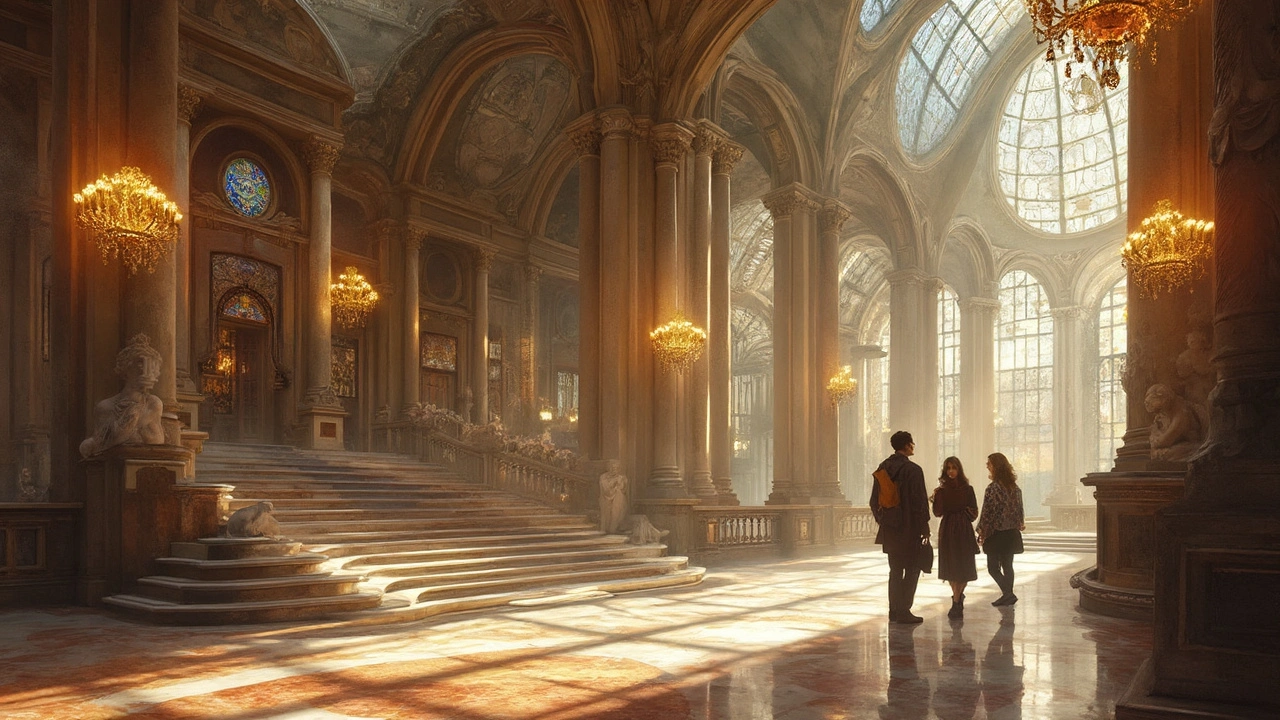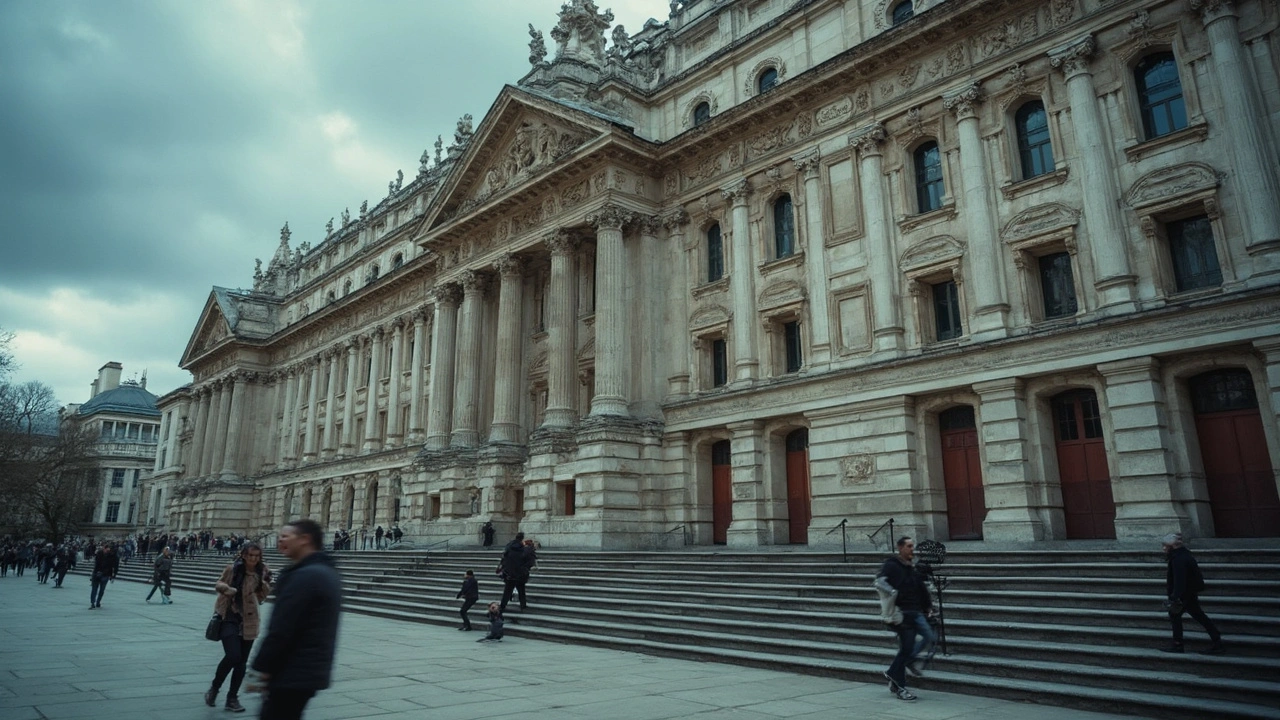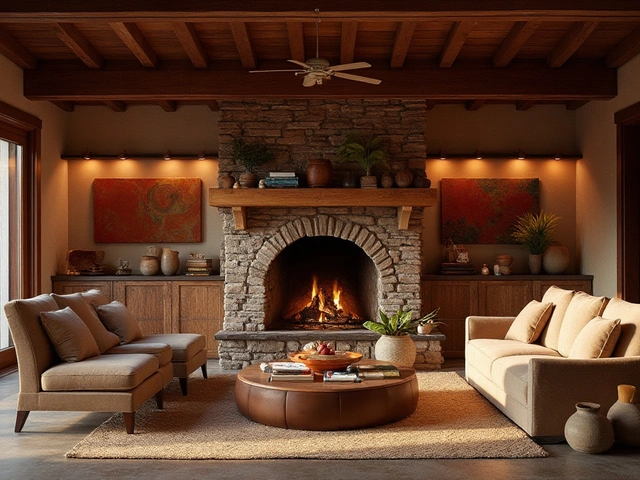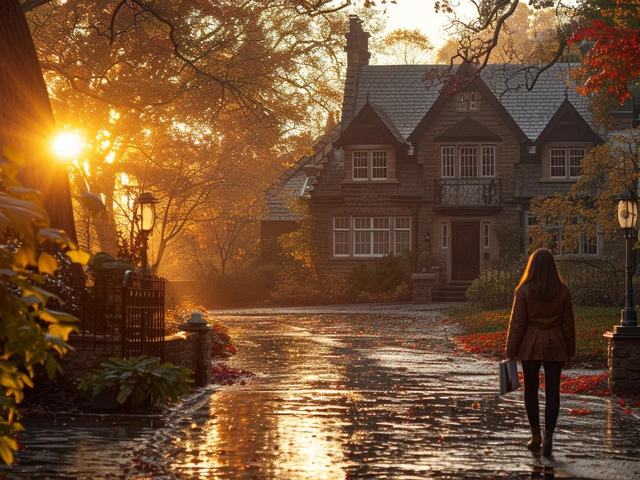Imagine walking along a boulevard lined with towering columns, grand staircases, and facades draped in sculpture. Your eyes can’t help but follow the precise symmetry and iron-clad order, even if you don’t know the name for it. That’s the trick of Beaux-Arts architecture—it whispers its own coded language into the very bones of a city, and you feel it before you can even put it into words. Seen that sweeping entrance of the New York Public Library or the opulent details of the Paris Opera? Those buildings aren’t just impressive; they’re speaking a secret design dialect, one layered with history, ambition, and drama. Why did so many architects go wild for its style? What rules decided where that gilded angel or that massive dome should land? Turns out, every detail, right down to the placement of a gargoyle, once had a manual.
How Beaux-Arts Architecture Set the Stage: A History of Design Codes
Beaux-Arts architecture didn’t just show up one day and take over city skylines. Its story starts in early 19th-century Paris, blossoming at the École des Beaux-Arts, the famous school that churned out more than a century’s worth of design geniuses. Think of it as a Hogwarts for architects—except their magic was precision, planning, and drama, all rolled into one giant curriculum. What made this school special was its focus on classical Roman and Greek styles, mashed up with strict rules. Students spent years mastering the art of scale, symmetry, and sequence. The process was intense; if you wanted to build a Beaux-Arts masterpiece, you had to compete in grueling design contests, sketch elaborate blueprints, and study every nuance of classical proportion until it took root in your bones.
By the time Beaux-Arts ideas landed in the United States in the late 1800s, thanks in part to the World’s Columbian Exposition in Chicago, the style was loaded with prestige. American architects like Richard Morris Hunt, Cass Gilbert, and Julia Morgan had trained in Paris. They brought home the recipe for making buildings feel as regal as palaces or opera houses. Suddenly, city planners wanted Beaux-Arts monuments everywhere: libraries, museums, train stations, even banks.
You’ve probably seen the results, maybe without realizing it. Places like Grand Central Terminal and the Boston Public Library are classic examples. Even the city plan of Washington, D.C. follows Beaux-Arts logic—a layout designed for ceremonial processions, with grand vistas and axial avenues leading your eyes straight to domes and memorials. The movement was more than just a style—it was about orchestrating cities like theater sets, with every background actor (hello, sculpture and fountains) choreographed within a massive civic drama.
Here’s the thing that’s so wild: the rules were a kind of open secret. Columns didn’t just look pretty—they marked status and signaled function. A big staircase at the entrance? That was a stage for public life. Even the exact curve of a dome was calculated to suggest harmony. This is why, if you stand in a major Beaux-Arts space, you feel both small and important at the same time—the building is performing for you, but you’re also cast in its epic story.
By the early 20th century, the U.S. had its own wave of homegrown Beaux-Arts legends. The grand designs helped launch the City Beautiful Movement, which aimed to use beauty and order to inspire civic virtue and pride. It left an indelible mark on American cities, shaping public spaces well into the 1920s. Even after modernism swept in and called for more “practical” approaches, the bones of Beaux-Arts could still be found lurking underneath, proving how hard it is to shake off a style that practically invented spectacle.
Decoding the Elements: What Makes Beaux-Arts Tick?
If you want to spot Beaux-Arts architecture on the street, learn to read its rules. Think “more is better”—these buildings are packed with details, big and small, all orchestrated for maximum effect. The trick, though, is that nothing’s random.
Start with the basics: symmetry and axes. Beaux-Arts facades are nearly always mirrored left to right, like a face seen head-on. Doors line up perfectly with windows, domes with entryways. This isn’t just for show—it creates a clear visual path, guiding your gaze exactly where the architect wanted it.
Now layer on the ornament. Columns are everywhere, but they’re not all the same. You’ll find a wild hybrid of Greek, Roman, and Renaissance touches: Ionic scrolls rub shoulders with Roman arches; Corinthian capitals sprout beneath Baroque swags. Pediments (those triangular bits above entrances) are filled with storybook scenes or carved shields.
Grand staircases, both inside and out, were a Beaux-Arts signature move. They’re designed to sweep you off your feet, literally and metaphorically. Even entrances look and feel theatrical. Picture gilded doors flanked by carved allegorical figures—Justice, Wisdom, Patience—all telegraphing what you’re about to experience inside.
Windows get special treatment too. They come in pairs or threes, often arched and topped with sculpted keystones. Balconies are detailed with wrought iron, ready for dramatic appearances. Domes soar overhead, their curves set to classical ratios borrowed straight from Roman temples. And don’t skip the roofs: these are often mansard style, high and angular, capped with pavilions or lanterns.
The interiors can be even more layered, with sweeping halls, marble staircases, mosaic floors, and ceilings frescoed with mythical scenes. The aim is to make you feel like you’re passing through a living painting.
But even if all these flourishes sound a bit much, there’s a reason for their order. Every detail is supposed to reinforce the building’s purpose and place in the civic landscape. The aim? To express the values of knowledge, progress, or power—not just to show off wealth. These strict visual codes helped people, even those who couldn’t read, to immediately “get” what kind of building they were looking at. Libraries looked wise, courts looked firm, museums looked noble. You didn’t have to read a sign to know you were somewhere important.
| Element | Signature Beaux-Arts Detail | Purpose/Message |
|---|---|---|
| Symmetry | Mirrored facades, central axes | Order, harmony, clarity |
| Columns | Mix of orders, grand scale | Strength, wisdom, classic lineage |
| Stairs & Entrances | Grand, formal approaches | Dramatic welcome, civic pride |
| Sculpture & Ornament | Allegories, shields, garlands | Identity, value-signaling |
| Windows & Roofs | Arched triplets, mansard roofs | Light, air, hierarchy |
Want a simple trick? If you notice tons of symmetrical windows, a giant staircase, and mythological sculptures mingling over a parade-ready avenue, odds are you’re looking at Beaux-Arts. It’s like a visual scavenger hunt—you just need to know the clues.

Famous Beaux-Arts Examples and the Stories They Tell
Some buildings carry the Beaux-Arts label so strongly, they almost become characters in their own right. When you set foot inside Grand Central Terminal in Manhattan, you’re not just catching a train. You’re staged at what amounts to a marble piazza for New Yorkers, crowned by a vaulted ceiling painted with constellations. This wasn’t an accident—architects Reed and Stem, along with Warren and Wetmore, wanted the ceiling to remind commuters they were at the center of a modern, cosmopolitan universe.
Take the Paris Opera (Palais Garnier) for another example. It’s a nearly delirious blend of marble swaths, gold leaf, gigantic chandeliers, and those iconic dance-like steps outside. Designed by Charles Garnier and finished in 1875, it’s so ornate Napoleon III called it a “palace for all the people.” The building drips with narrative—sculptures of muses hinting at the arts, balconies made for theatergoers to see and be seen.
Across the Atlantic, the Boston Public Library stands as a prime American take. With its carved lions, arched windows, and “palace for the people” slogan, its design reflects the belief that beautiful architecture could inspire everyday users. Inside, the mosaic-laden reading room encourages study like a cathedral does prayer. Architect Charles Follen McKim, of the famous trio McKim, Mead & White, saw the library not just as a storehouse for books, but as a civic anchor for urban identity.
It’s not just libraries and train stations. The San Francisco City Hall, with its massive dome—taller than the U.S. Capitol’s—was built after the 1906 earthquake, a visible symbol of resilience and rebirth. Or zoom out to city planning itself: the 1901 McMillan Plan for Washington, D.C. is soaked in Beaux-Arts strategy. Avenues slice the city into grand axes; parks and squares are arranged for maximum ceremony, all echoing the Parisian plans of Baron Haussmann in scale and intent.
Even small details became part of pop culture. The carved clock outside Grand Central or the lion statues at the New York Public Library have become civic mascots, rallying points, even photo ops for tourists and locals alike. The architecture isn’t just backdrop—it’s woven into the daily rhythm of the city.
It’s wild to think these buildings were planned so carefully that even the way you walk through them is choreographed for maximum awe. Go up the Grand Staircase in the Palais Garnier and you’ll notice you rise slowly, flanked by statues, all staged for dramatic reveals. Pause in the New York Public Library’s Rose Main Reading Room and look up—those painted clouds and carved ends are there to make you feel part of something bigger. The hidden language of the style is part science, part performance.
Sometimes, the popularity of Beaux-Arts set off waves of imitation—the "White City" of the 1893 Chicago fair is a perfect case. Here, the entire fairground was laid out as a Beaux-Arts fantasy, with buildings gleaming under newfangled electric lights. That showed Americans what a city could look like: orderly, beautiful, almost magical in its spectacle. This idea filtered all the way down to neighborhood libraries and banks, giving even small towns a grand sense of connection.
Beaux-Arts Today: Making Sense of Its Hidden Messages
With glass towers filling skylines and minimalism ruling Instagram feeds, you’d think Beaux-Arts would feel like it belongs in a museum. But weirdly, traces of it keep popping up, especially when cities want to flex their heritage. Buildings that follow Beaux-Arts codes are still seen as symbols of stability—think courtrooms, institutions, even city halls choosing to restore their grand old spaces instead of tearing them down.
In the past decade, advocates and city planners have revived interest in keeping these buildings alive. It’s not just nostalgia—it’s about public space with a sense of memory and weight. When people gather for major events, protests, or celebrations, it’s often at a Beaux-Arts landmark. The reason feels hidden in plain sight: the style’s rules make these spaces naturally inclusive, staged for both spectacle and everyday use.
The secret language is more than fancy columns and big steps. It’s about signaling care for civic life—a belief that architecture should celebrate the public. When you stand in front of a Beaux-Arts library, you sense you’re standing at the heart of a community, not just outside a building. The symmetry and layout guide even first-time visitors, helping them find their way or gather for shared moments. This coded hospitality is one reason cities fight so hard to preserve Beaux-Arts gems instead of trading them for something more "efficient."
If you ever wondered why selfies at Grand Central, the Boston Public Library, or the Paris Opera look so good, credit goes to the architectural planning woven through them. These spaces put people literally on a public stage, staged for drama and togetherness. Even modern architects, like Robert A. M. Stern or David Chipperfield, occasionally wink at Beaux-Arts rules when they want to make an entrance unforgettable or stamp a new building with a whiff of legacy.
For anyone exploring a city, knowing the basics of Beaux-Arts decoding turns a simple walk into a hunt for meaning. See those twin staircases? They’re not just for looks. Spot the curved dome in the distance? That’s the architect drawing your eye—another nudge in the silent language of design. The bold carvings, the symmetry of streets, even the spots where people gather—it all traces back to rules written over a century ago, still shaping how we move, meet, and marvel today.
So next time you find yourself standing before a sweeping stone facade, surrounded by classical columns and ornament that seems to tell a thousand stories, try asking: What is this place saying, and who is it performing for? The answer is hidden in Beaux-Arts’s greatest sleight of hand—making order and beauty feel like everyone’s birthright, right here in the city’s heart.





